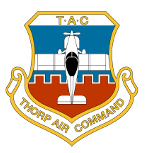I actually woke up this morning thinking I needed to run that thing across the scales when I get it home.

The tail heavy concern came from the previous owner who had been flying with a heavier engine installed. He was describing how it felt to him. Since it made through phase 1 plus a couple of hours after the upgrade I am assuming it is safe enough to fly but I will improve it if possible. Excess lead is for making fishing sinkers!
I had another thought... Was the T-18 originally designed with the battery on the firewall? It seems like the posts I have read concerning battery installations behind and/or under the seats had to do with installing heavy props. With a wood prop and a Skytech starter, a stock battery on the firewall would make a big difference and possibly explain the excess lead up front. The Odyssey isn't as heavy so moving it may not bring it all the way in but it would help. Additional bonuses for the shorter leads are causing less voltage drop and fewer potential chafing problems.
The more I think about it the more I want at least some of the lead off of it. I think having 4 pounds of lead bolted to the baffling is asking for trouble in the form of cracks and breakage. Baffling doesn't seem to hold up all that well under normal circumstances but then most baffling I see is over 40 years old. I don't like the 5 pounds on the engine but I don't see where it would actually cause a problem.







